 Leading Blog | Posts by Month |
 Leading Blog | Posts by Month |
01.31.15

LeadershipNow 140: January 2015 Compilation
See more on
Posted by Michael McKinney at 08:23 PM
01.26.15

10 Rules for Future-Proofing Yourself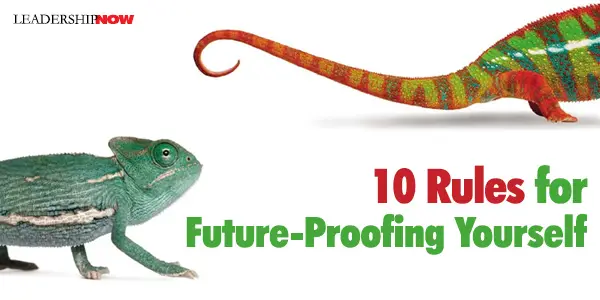
THE most common problem that modern professionals face is a lack of risk tolerance and a resistance to change. Scott Steinberg writes in Make Change Work for You, Scott Steinberg offers ten rules that successful people follow to future-proof themselves. But underlying it all is how we deal with fear. We need to find a quick way to neutralize its negative influences, find courage, and take positive action. He suggests we try the FEAR problem-solving method:Focus: When you see a problem, study it closely until you’re sure you are seeing it objectively.
The ten rules with Steinberg’s insights: Rule 1: Be Courageous
Rule 2: Make Fear Your Friend
Rule 3: Turn Anxiety and Paranoia into Awareness
Rule 4: Transform Failure into Success
Rule 5: Master the Art of Improvisation
Rule 6: Play the Odds
Rule 7: Experiment Constantly
Rule 8: Pick Your Battles
Rule 9: Keep Forging Ahead
Rule 10: Stay Relevant
Steinberg concludes, “Being future-proof means being flexible, greeting change, and innovating your way out of problems by training yourself to put fear on the backburner, make decisions under duress, and make the most of the tools and resources available.” 
 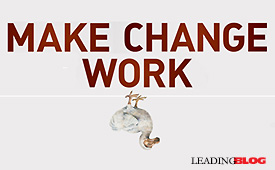
Posted by Michael McKinney at 11:38 PM
01.22.15

A Beautiful Constraint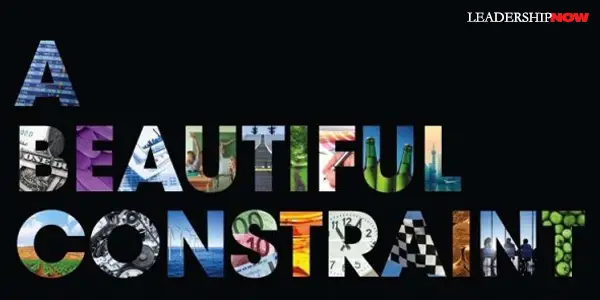
TYPICALLY we look at a constraint as a negative. A problem to be solved. But what if a constraint was the gift that opened up previously unimagined possibilities? What if a constraint was the gift that took you to the next level? Authors Adam Morgan and Mark Barden remind us in A Beautiful Constraint that Google’s home page is as simple as it is because that was the limit of Larry Page’s coding ability at the time. The overall-wearing hero Mario is as colorful as he is because of the challenges of eight-bit technology. And which of us would be using Twitter at all today if it had a limit of 14,000 characters rather than 140? We are all faced with the challenge of growing within the constraints of time, resources, method and /or people. Sometimes constraints are imposed on us and sometimes we benefit by placing constraints on ourselves. “We are living in an era of extraordinary people rewriting our sense of what is possible. They make an unarguable case that a constraint should be regarded as a stimulus for positive change—we can choose to use it as an impetus to explore something new and arrive at a breakthrough. Not in spite of the constraint, but because of it.” Organizations of all types—business, churches and schools—and people from all walks of life would benefit from understanding how to reframe a constraint into a better way of doing something. We begin the process by creating the right mindset. We need to increase our ambition relative to the constraint not to scale back our ambition to satisfy the constraint. That’s victim mentality. And that’s usually where we begin. Better yet, we can try to find a way to neutralize the constraint so we can deliver on our ambition. But the authors have created a path for us to become transformers—to find a way to use a constraint as an opportunity, possibly even increasing our ambition along the way. 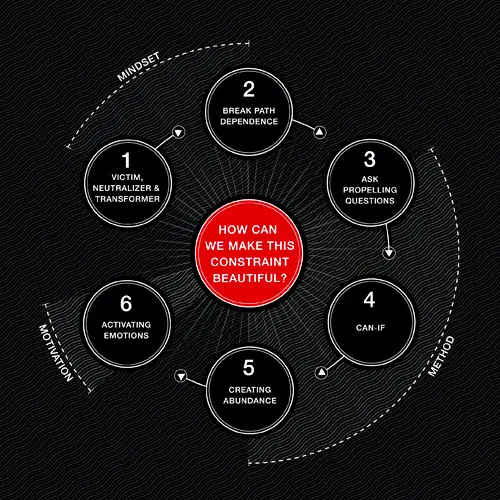 Often transformers will impose constraints upon themselves to force themselves to unearth different, possibly transformative strategies and solutions. This helps to reduce path dependence or the assumptions and ways of thinking about solutions that define “the way we do things around here.” “Today’s path is really yesterday’s path.” We must examine all of the ingrained habits that may stand in the way of our being able to see and realize the possibilities in a constraint. To bind our bold ambition to a significant constraint we have to ask a propelling question. The kind of “what if…?” question that forces us to think and behave in a better way. “If we don’t ask propelling questions of ourselves, someone is going to ask them of us, and by that time we will be behind the curve.” To answer a propelling question we need to answer not with a “we can’t because” statement but with a “we can if” statement. It focuses the nature of the conversation on how something could be possible and not on whether it would be possible. Then we get resourceful. What stops us from being more resourceful is the way we think about resources. We tend to think of the resources available to us as the ones within our immediate control. But there are all kinds of resources outside of our immediate control. One method is to create shared agendas. “We, who might appear to have little, need to help them see that we have what they want.” There are organizations that routinely embrace constraints to make themselves better. The beautiful constraint process cannot be managed, it must be led. “When making constraints beautiful, motivation is method. Breakthrough happens when a propelling question meets strong emotions. Without activating the right emotions, it will be too easy to regress to the victim mindset.” The authors note that “if we are heading into a more constrained future, then how we manage those constraints will determine how we progress.” As a leader, steering your organization towards constraints sooner rather than later, is an important source of competitive advantage. Raising the level of ambition alongside a constraint encourages growth and learning—both individually and organizationally—because it causes us to reexamine our current paths, assumptions, and ways of thinking. A Beautiful Constraint is a outstanding book with inspiring examples that will spark your imagination to create your own beautiful constraint. It should be standard issue to every student as the thinking described here will serve them well in life. What constraint will you go and make beautiful? 
Posted by Michael McKinney at 10:02 PM
01.17.15

When Life Gives You Lemons, Make Lemonade 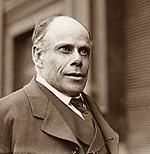 In 1883 he made a trip to London and performed before the then Prince of Wales who later went on to become King Edward VII. He quickly became a favorite of the English royal family. Wilder's career eventually branched into vaudeville and in 1904 embarked on a round the world tour. In a memorial to his life, The King of Jesters, Elbert Hubbard praised him for his optimism and achievements in the face of his disabilities. He wrote: He was a walking refutation of that dogmatic statement, Mens sana in corpore sano. His was a sound mind in an unsound body. He proved the eternal paradox of things. He cashed in on his disabilities. He picked up the lemons that Fate had sent him and started a lemonade-stand.Hubbard coined the concept "when life gives you lemons, make lemonade." It was later popularized by the likes of Dale Carnegie who used it in his book How to Stop Worrying and Start Living. Carnegie's wrote: If You Have a Lemon, Make a Lemonade.
Posted by Michael McKinney at 08:28 AM
01.16.15

Is What You Know Holding You Back?
INVESTOR and entrepreneur Paul Kedrosky wrote in What Should We Be Worried About? by John Brockman: "Writer William Gibson once famously said that 'The future is already here—it's just not very evenly distributed.' I worry more that the past is here—it's just so evenly distributed that we can't get to the future." What we know has a bearing on what we learn. What we know can not only limit if we learn but it limits what we learn. What we know acts as a filter to what we learn. We naturally filter out things that don’t fit with things we already know. We are quite adept at putting a spin on what we learn so that it is consistent with what we already know. In other words, we may be taking in more information, we may be studying more but we are not learning or doing anything new. We are merely reinforcing what we already believe to be true and ignoring or explaining away that which doesn’t fit with what we know. In what way is old thinking holding you back?
Posted by Michael McKinney at 03:47 PM
01.13.15

There is No Magic in Failing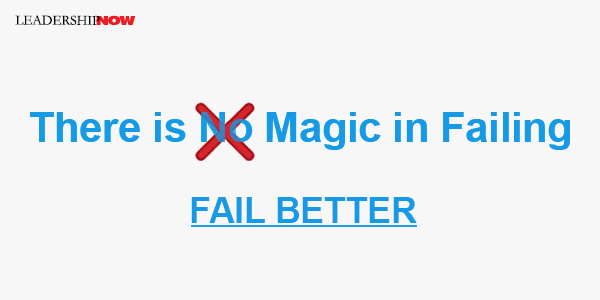
DESPITE all the talk about making you feel better about inevitable failures, failure is only an opportunity if you learn from it and then act on it. What if you actually orchestrated better failures? Designed useful failures instead of hit or miss failures? That’s what Anjali Sastry and Kara Penn suggest in their book Fail Better. “The right kind of failure instructs, refines, and improves ideas, work products, skills, capacities, and teamwork.” The idea is to “generate small, smart mistakes that enable your team its work requirements (a first-order performance goal) while building capacity, habits, and insight (the second-order, deeper change).”To this end they offer the three-step Fail Better Method: Launch your project. The goal of the launch phase is not to over plan and set things in stone, but to consider your project in context, anticipate outcomes as tied to a series of logical assumptions, pull together your resources, and get the right people involved. Plan your projects in such a way as to make any failures useful. Build and refine. It can be helpful to think of your project as a cauldron for experimentation and learning—in which you will plan, act, and assess to decide the next step. Approach your project in cycles or chunks in which you plan, act, and assess, then take the next step, and even big projects become more tractable while enabling your team to learn and refine its plans. Identify and apply what you've learned. The final step is embedding what you’ve learned not just within your team but organizationally. No one can know exactly why things turn out the way they do. Even while learning from your mistakes, the corrective action is based on incomplete knowledge. You will need to “identify lessons learned while bearing in mind that your understanding is limited.” Learning is a skill that is never taught, but it is a critical one as we go forward. A systems approach is essential. “Systems thinking teaches us that it’s more fruitful to take an endogenous view that seeks to explain how the results are a product of factors in which you play a part as well. You have much more power to shape outcomes if you can better understand how the problems and opportunities you face today are connected to your own past actions and are influenced by the structure of the industry, society, and ecosystem in which you play a role.” Our biggest issues will not be solved with a single solution. Rather they will be solved bit-by-bit—even across groups—one effort at a time. Learning as we go. 
Posted by Michael McKinney at 10:23 PM
01.05.15

Rookie Talent: Avoiding a Kodak Moment Kodak began to struggle financially in the late 1990s as a result of the decline in sales of photographic film and its slowness in transitioning to digital photography. In 2012, the company filed for Chapter 11 bankruptcy protection. The Kodak name became synonymous with a resistance to change, but it’s not just innovation the company lacked. In 2011, Kodak made the list of Top 10 Fortune 500 Employers With Older Workers, called out for employing a disproportionately high percentage of mature workers. I can’t help but wonder: If Kodak had paid attention to its aging workforce trend, would the company have maintained market share and avoided bankruptcy? I believe the answer is yes. I also believe companies didn’t learn much from Kodak’s example. Although the recession ended in 2009, here we are five years later and unemployment for Generation Y (1982-1995) remains near its cyclical peak across the world. The largest, best-educated generation in history has become an under-utilized resource, vastly unprepared to move into positions of responsibility and leadership. The lack of skill development and leadership development among Generation Y affects every generation. It’s the Trickle-Up Effect; what influences the youngest generation eventually influences the masses. That’s why employers should be more concerned about who’s moving in (the rookies), rather than who’s moving out (the retirees). So how do we lead this generation of rookie talent? This generation is the first to be raised in a post-industrial era driven by technology. As a result, they will value and seek out different work experiences and will certainly usher in widespread and significant change. To keep the rookies engaged and actively contributing to the team, here are a few changes managers need to anticipate and embrace:
Avoid making this your Kodak moment. Remember: Change is the only certainty, and the rookies are your only succession plan. Sarah Sladek started researching demographic shifts, talent turnover, and generation gaps in 2002. She has authored four books on the topic and numerous research papers. Sladek is the CEO of XYZ University, the only company in the nation focused on helping organizations engage younger generations. Her latest book is Knowing Y: Engage the Next Generation Now
Posted by Michael McKinney at 01:00 AM
01.02.15

Are You Trapped in Survival Mode?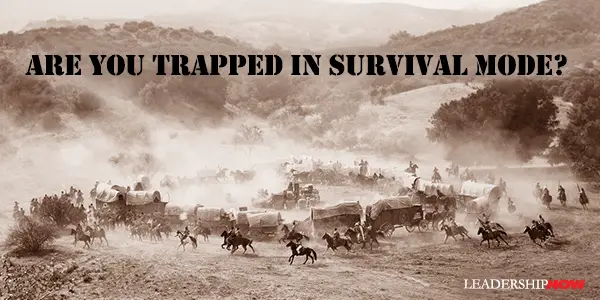
THOMAS PLUMMER is a coach to the fitness industry. In a Facebook post he advised fitness professionals: The mindset of survival that keeps you alive in tough times is also what will kill your business during good times. Keeping a struggling business alive during tough markets is a skill that drains the life out of you. Everyday you fight for pennies, do the work of many and learn the techniques necessary to keep going when others are failing. This same mindset is also what leads to failure for these owners during good times because they forget how to attack the market and grow the business. Most often the thing that got us to where we are is not the thing that will get us to the next place we need to go. Sometimes we get so focused on what we have become good at, that we miss the changes around us. It’s easy to get stuck repeating what we’ve always done. When we do we come from a place of weakness rather than strength. Inertia can keep us from considering the possibilities. Reintroduce possibilities into your thinking. Survival isn’t enough to give your life to. It’s a self-defeating approach to life. Choose to be remarkable.
Posted by Michael McKinney at 10:53 AM
01.01.15

First Look: Leadership Books for January 2015Here's a look at some of the best leadership books to be released in January.



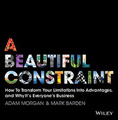
For bulk orders call 1-800-423-8273  Build your leadership library with these specials on over 100 titles. All titles are at least 40% off the list price and are available only in limited quantities. “Beware of the person of one book.” — Thomas Aquinas
Posted by Michael McKinney at 12:20 AM
|
BUILD YOUR KNOWLEDGE


How to Do Your Start-Up Right STRAIGHT TALK FOR START-UPS 
Grow Your Leadership Skills NEW AND UPCOMING LEADERSHIP BOOKS 
Leadership Minute BITE-SIZE CONCEPTS YOU CAN CHEW ON 
Classic Leadership Books BOOKS TO READ BEFORE YOU LEAD |
|